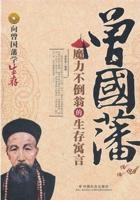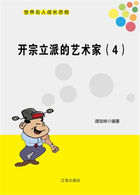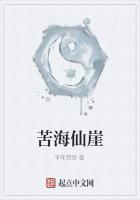Leonardo da Vinci
To paint a character from the Bible, for an old man, a beggar, or a shepherd, he would1 go to the public squares and the drinking dens, where he would1 be most likely to meet such persons. And he would1 draw a type or an animal from observation a hundred times before turning to his picture to fix it there for all time. He is said to have brought home peasants from the market and got them drunk2 in order to draw them. At the same time he was looking for3 laws; while4 studying the facial traits, he recorded the transitions in the closing and opening of the eyelid,5 the wrinkling of the nose, the pouting of the lips, in laughing, sneezing, yawning, cramps, perspiration, weariness, hunger — always he looked for3 the cause behind the expression which he was painting.
— E. Ludwig
drinking den n. 酒吧,酒铺
type n. 具有代表性的人(或事物)
peasant n. 农民
facial trait n. 面部特征;面部轮廓
transition n. 转变
wrinkle v/n. 皱缩;皱纹
pout v. 噘嘴
sneeze v. 打喷嚏
yawn v. 打呵欠
cramps n. 痉挛
perspiration n. 流汗
expression n. 表情
中译 观察(达·芬奇)
为了画好取自《圣经》的人物,老人、乞丐或牧羊人,达·芬奇总跑到那些公共广场和酒吧去。他在那里大概可以遇见这类人物。他总是把观察到的人物或动物画个上百次,才永久地固定在画布上。据说他为了画农民,曾把集市上的农民带到家里,让他们喝得醉醺醺的再作画。同时,达·芬奇也在寻找规律。他在研究面部特征时,便记录眼睑开合、鼻子折皱、噘嘴、大笑、打喷嚏、打哈欠、痉挛、流汗、疲倦、饥饿等时候的过渡变化——达·芬奇总是在探究被他描画的表情背后的原因。
——〔德〕路德维希
原来如此!
Leonardo da Vinci(达·芬奇,1452-1519),意大利文艺复兴时期(Renaissance)画家、雕塑家、建筑师和工程师,在艺术和科学方面都有成就,代表作有壁画《最后的晚餐》(Last Supper, 1495-97)、肖像画《蒙娜丽莎》(Mona Lisa, 1503-06)等,著有《绘画论》(Treatise on Painting, 1651)。
艺术家像科学家一样,需要敏锐细致的观察力、一丝不苟的态度,才能创造出生动、深刻的作品。
本文作者Emil Ludwig(路德维希,1881-1948),德国作家,除剧本、诗歌、散文外,著有名人传记多部。
增值英语
1 he would go... / he would be... / he would draw...
这几句里的 would 表示过去重复或习惯的行为,常译为“老是,总会”:
He would sit there for hours sometimes, doing nothing at all.
有时他在那儿会一坐就是几个小时,什么事情也不做。
When I was a child, we would get up early and go fishing on Sundays. 我小的时候,星期天我们总是早早起床去钓鱼。
2 ...got them drunk in order to draw them
句式 get sb / sth + past participle 十分常用,意为“使某人或事物处于某状况”,如:
get the room cleaned(使房间清洁);get my hair cut(使头发剪短);get the work done(使工作完成);get himself trapped(使他自己受困);get the building pulled down(把建筑物拆除)
注意 get 这时可用 have 代替。
3 he was looking for laws / he looked for the cause...
句式 look for sb / sth 表示“寻找”(= try to find / seek):
The committee is looking for a practical solution. 委员会正在寻找一个实用的解决方案。
They are looking for the right candidate to fill the vacancy. 他们在找寻适当人选填补空缺。
句式 look for sth 也可解作“期待”(= expect):
I am looking for some improvement in your attitude. 我期待你的态度有所改善。
Scientists are looking for a breakthrough in genetics. 科学家正期待在遗传学上的突破。
4 while studying the facial traits, he recorded...
句式 while studying the facial traits 是状语从句的省略形式,相当于 while he was studying the facial traits。这种省略要求从句的主语和主句的主语是同一的:
When young ( = When he was young), he liked driving very much.
他年轻时很喜欢驾驶汽车。
Although invited (= Although he was invited), he didn’t go.
他虽被邀请,但是没去。
5 closing and opening of the eyelid...wrinkling of the nose...
此段有不少面部表情和动作的描述,现归纳如下:
眼皮开合:close and open one’s eyelids
眨眼:blink / wink (指眨一只眼)
皱褶鼻子:wrinkle one’s nose
皱褶前额:wrinkle one’s forehead
皱褶眉头:wrinkle one’s brows
噘着嘴:pout one’s lips / purse one’s lips
拉长着脸 (表示不满):pull a long face
扮鬼脸:make a (funny) face
打喷嚏:sneeze
咳嗽:cough
流鼻涕:have a running nose
擤鼻涕:blow one’s nose
流口水:dribble / the mouth waters
流眼泪:the eyes water / shed tears
打呵欠:yawn
名言
As a well-spent day brings happy sleep,
so life well used brings happy death. —Leonardo da Vinci
勤劳一日,安眠一夜;勤劳一生,长眠无憾。—— 达·芬奇














